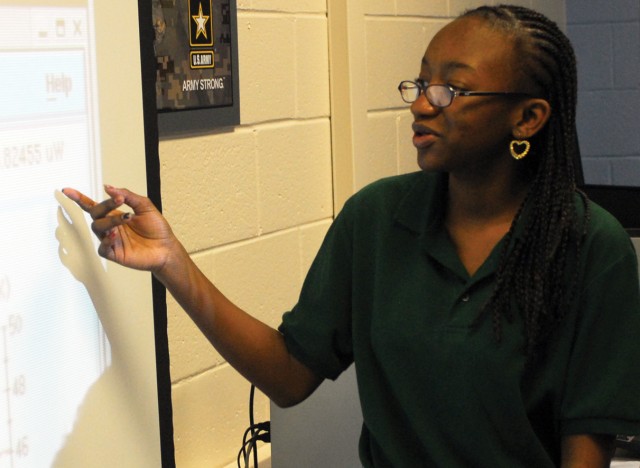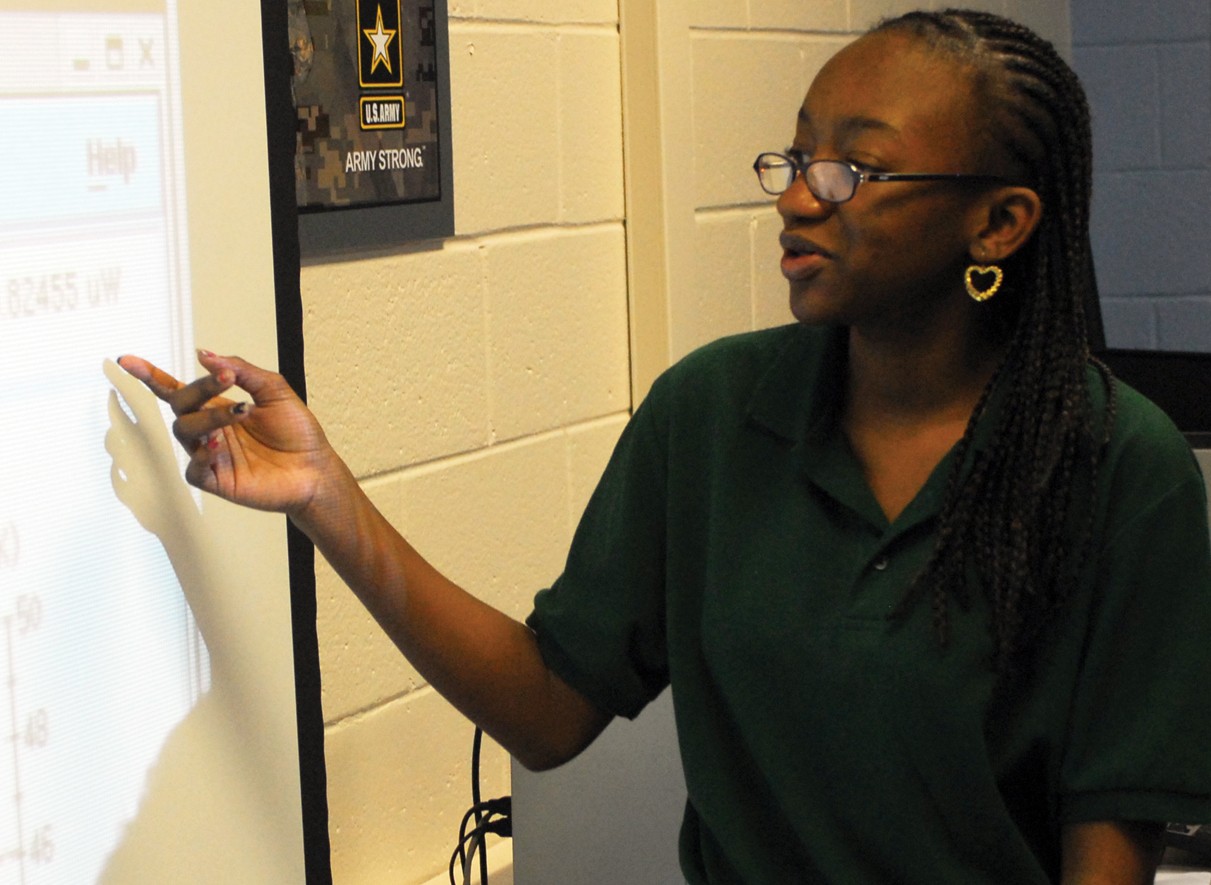FORT BENNING, Ga. - Students in the Faith Middle School Science Club collected data about Jupiter that will aid NASA in its research of the planet.
Using a radio telescope, students located Jupiter and captured its radio waves with the telescope Dec. 9 before recording the data, which translate to degrees Kelvin, to send to NASA.
"This is actually a radio telescope that was (originally) in NASA's bag of tricks. They were going to scrap it and ... a teacher in California spearheaded the program to buy it and make it available to kids all over the world," said Mary Matthews, club facilitator.
"Last time I checked, we were the only middle school in Georgia doing this. This is real-time research for these kids, not just something they're reading about."
The GAVRT program, which stands for Goldstone Apple Valley Radio Telescope, has assisted NASA for the past 10 years.
"NASA wants this information (because) they have been monitoring Jupiter's temperature through its electromagnetic waves for over 40 years," Matthews said. "These emissions, called synchrotron emissions, have varied as much as 50 percent over the years. Scientists want to know why."
The Science Club, which has been involved in the project for the past five years, schedules antenna time with mission control in California annually. In preparation for the project, students researched information about Jupiter, such as distance and atmosphere.
Sixth-grader Tatianna Minter said she enjoyed learning about Jupiter and was impressed radio waves could travel such a distance. Jupiter's orbit is more than 300 million miles from earth's orbit.
"I've never done this before. I think it was an awesome experience to have," said 11-year-old Tatianna, who plans to participate again next year. "Ever since I started learning about science ... about the planets, and how far away they are and how they rotate ... science has always been my favorite subject."
The club currently has 15 members. Activities are completely student-led, Matthews said, and many are interactive. In the past, students have shot off air pressure rockets, created mock tornadoes inside soda bottles and studied geology, chemistry and physics in Columbus State University labs.
Seventh-grader Isaiah Cray said he joined the club because "it's made science more fun for me."
"I used to be good only in math and kind of average in science, but when I joined the Science Club, my B in science went up to an A," he said.
"Science tells us some of the answers people really want," said Isaiah, who hopes to be a scientific researcher for a hospital some day. "It's really hands-on. That's why I like it. You get to mess with a lot of things ... like elements from the periodic table. Maybe I can make something new no one has ever created before with science."
Students must maintain a B average in science to join the club. It is open to all grade levels at Faith. For more information, call the school at 706-545-0310.


Social Sharing